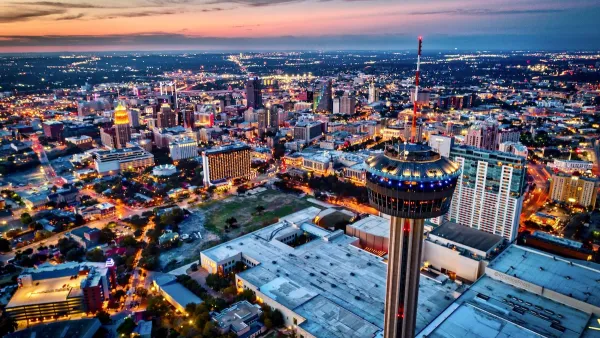Controversial scientist James Lovelock is convinced that current conceptions of "sustainable development" are hopelessly wrongheaded. We're facing a climate catastrophe, he believes, and only radical solutions will be up to the challenge.
"Here, in its oversimplified essence, is Lovelock's doomsday scenario: Rising heat means more ice melting at the poles, which means more open water and land. That, in turn, increases the heat (ice reflects sunlight; open land and water absorb it), causing more ice to melt. The seas rise. More heat leads to more intense rainfall in some places, droughts in others. The Amazon rain forests and the great northern boreal forests --the belt of pine and spruce that covers Alaska, Canada and Siberia --undergo a growth spurt, then wither away. The permafrost in northern latitudes thaws, releasing methane, a greenhouse gas that is twenty times more potent than CO2 -- and on and on it goes.
In a functioning Gaian world, these positive feedbacks would be modulated by negative feedbacks, the largest of which is the Earth's ability to radiate heat into space. But at a certain point, the regulatory system breaks down and the planet's climate makes the jump -- as it has many times in the past -- to a new, hotter state. Not the end of the world, but certainly the end of the world as we know it.
In Lovelock's view, modest cuts in greenhouse-gas emissions won't help us -- it's too late to stop global warming by swapping our SUVs for hybrids. What about capturing carbon-dioxide pollution from coal plants and pumping it underground? "We can't possibly bury enough to make any difference." Biofuels? "A monumentally stupid idea." Renewables? "Nice, but won't make a dent." To Lovelock, the whole idea of sustainable development is wrongheaded: "We should be thinking about sustainable retreat."
Retreat, in his view, means it's time to start talking about changing where we live and how we get our food; about making plans for the migration of millions of people from low-lying regions like Bangladesh into Europe; about admitting that New Orleans is a goner and moving the people to cities better positioned for the future.
For water, the answer is pretty straightforward: desalination plants, which can turn ocean water into drinking water. Food supply is tougher: Heat and drought will devastate many of today's food-growing regions. It will also push people north, where they will cluster in cities. In these areas, there will be no room for backyard gardens. As a result, Lovelock believes, we will have to synthesize food -- to grow it in vats from tissue cultures of meats and vegetables. It sounds far out and deeply unappetizing, but from a technological standpoint, it wouldn't be hard to do.
As a last resort, to keep the planet even marginally habitable, Lovelock believes that humans may be forced to manipulate the Earth's climate by erecting solar shades in space or building devices to strip huge quantities of CO2 out of the atmosphere."
FULL STORY: The Prophet of Climate Change: James Lovelock

Planetizen Federal Action Tracker
A weekly monitor of how Trump’s orders and actions are impacting planners and planning in America.

Chicago’s Ghost Rails
Just beneath the surface of the modern city lie the remnants of its expansive early 20th-century streetcar system.

San Antonio and Austin are Fusing Into one Massive Megaregion
The region spanning the two central Texas cities is growing fast, posing challenges for local infrastructure and water supplies.

Since Zion's Shuttles Went Electric “The Smog is Gone”
Visitors to Zion National Park can enjoy the canyon via the nation’s first fully electric park shuttle system.

Trump Distributing DOT Safety Funds at 1/10 Rate of Biden
Funds for Safe Streets and other transportation safety and equity programs are being held up by administrative reviews and conflicts with the Trump administration’s priorities.

German Cities Subsidize Taxis for Women Amid Wave of Violence
Free or low-cost taxi rides can help women navigate cities more safely, but critics say the programs don't address the root causes of violence against women.
Urban Design for Planners 1: Software Tools
This six-course series explores essential urban design concepts using open source software and equips planners with the tools they need to participate fully in the urban design process.
Planning for Universal Design
Learn the tools for implementing Universal Design in planning regulations.
planning NEXT
Appalachian Highlands Housing Partners
Mpact (founded as Rail~Volution)
City of Camden Redevelopment Agency
City of Astoria
City of Portland
City of Laramie


























